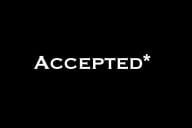You have /5 articles left.
Sign up for a free account or log in.

Istockphoto.com/Drafter123
Is your area up for outside evaluation? In higher education, we typically know these as external reviews. And they frequently elicit strong feelings. Are you excited? Panicked? Irritated? Exhausted? Do you have no idea where to begin?
Some institutions have a culture of requiring regular external reviews and some do not. Some institutions have an external review system in place. Even better, some link those reviews to accreditation and budgets, thus bolstering further accountability. Still, the knowledge about external reviews in college communities can be uneven. Out of expediency, people may rely on wisdom shaped from past precedent of completed reviews rather than current best practice.
As a seasoned reviewer of programs and centers, I offer some recommendations for beginners and pros. It’s my wish list for making reviews gratifying and motivating rather than exhausting and soul killing.
Hire a bold reviewer. Don’t squander your review on someone who will tell you what you already know. That’s a waste and a luxury we cannot afford in this higher education moment, when crises abound. Not all reviewers think boldly or strategically.
But how can you find the bold reviewer in a haystack? First, clarify with colleagues that everyone seeks innovation. Set the intention. While coming to consensus about the desire for innovation may be a challenge, you’ll know what people want. Ideally, new ideas will emerge from within your community that may complement the review and/or may even be better than some ideas emerging from the review.
After all, who knows your institution and culture better than you? It’s worth the time and potential discomfort to have this “tilling the ground” conversation. Cultivating bottom-up innovation is always preferable, especially for faculty members.
It may be useful to establish common ground with colleagues -- some of whom may follow higher education news religiously while others avoid it -- about the landscape of higher education today. Consider having a mini retreat with a handful of articles about higher education broadly relevant to your institution. Have the hard discussions about the future of your institution and discipline; ensure that everyone is all in and ready for change. It’s hard to argue for stasis in this higher education climate, but there is a power in having everyone agree that they’re open to new thinking. It’s difficult to invite someone from the outside in, ask for future forecasting and agree to implementation if you haven’t even agreed that there’s a problem.
Next, have colleagues crowdsource and research interesting, innovative and creative departments, programs, centers or whatever it is you need reviewed. How do you know what is innovative? Take a look at industry publications and higher education associations and other organizations: What programs and institutions are being discussed? Is your college or university part of a consortium and, if so, who is innovating there? Ask your dean and president for ideas about innovative leaders. Your discipline organization may also have a list of names of reviewers with descriptions.
Gravitate toward those articulating a big vision. Invite people who do interesting scholarship and/or are running captivating (perhaps aspirant) programs to review yours. If they say no, it’s not a big deal. Just move on.
You should also thoughtfully consider institutional rankings. Take a look at those lists and investigate who lives up to their reputation. Innovation is often found in unlikely places. Sometimes institutions less highly ranked are motivated to make bold moves because maintaining the status quo is not an option.
All this research takes time, obviously. Be smart about the labor. Try using students and research assistants to investigate and organize comparative data, enter contact information, and gather articles about your areas of focus and growth. Put that saved time into evaluating whom to choose as a reviewer, reading about best practices in your area and writing a compelling self-study.
Think big in your internal self-study. In fact, equally important to hiring a bold reviewer is completing a compelling self-study. Depending on resources at your institution, you may be living in a world of “can’t.” Don’t be crushed by it. Look at it this way: if you don’t imagine what could be, then your review is a pointless exercise in more of the same. If you do not propose something bolder or bigger, you have zero chance to pitch it to the people -- the provost, advancement professionals and so on -- who make it rain or bring in the dollars.
Most colleges and universities have a standardized template (and process) for completing a self-study. If yours does not, you can find plenty of models on the internet. Self-studies typically involve basic reflection questions in the vein of a SWOT analysis (strengths, weaknesses, opportunities, threats), bolstered by evidence often provided by an assessment office.
But most self-studies stop here. Don’t. If your department/area/center has completed a self-study with zero consideration of how it ties to the larger institution, take a pause. You’ve missed an opportunity. Think structurally. How does your area recruit and retain students? What is its relationship to the institutional mission? To your city? How is growth of your area related to institutional growth? How does your area benefit or help both the institution and your community?
You may resent the fact that higher education needs to make the case for itself. But it’s the world we live in. Your area to be reviewed is no different. Whether it’s for administrators planning budgets or the public debating the existence of your area, making a compelling case is essential. The good news: good writing is never wasted. If you are convincing in your self-study, it’s likely that prose can be recycled -- whether for your website, a brochure or the admissions office.
You’re going to see a theme in the tips I’m offering: whenever you can make any work do double and triple duty, you’ll see multiple positive consequences. First, the work is elevated out of an underground bunker to where it can see the light of day. Like our students, we feel bolstered communicating to real and larger audiences. Second, the act of conjuring multiple audiences forces us to think bigger about our areas from the outset. The seemingly simple act of identifying other places where your reports can appear shifts the paradigm immediately to being more systems-analysis oriented.
Finally, many people don’t realize that they can frame parts of the self-study explicitly with questions for the reviewers. If that feels daunting, then at a minimum, organize the self-study document around at least three distinct areas of concern or focus. Doing so is mutually advantageous: it helps you focus on a few things that you can reasonably accomplish, and it helps the reviewer home in on a couple of manageable areas to strategize with you.
Use the reviewer to your advantage. If there is any lingering sense that the reviewer is out to get you or if you feel defensive about their visit, you’ve failed before you started. If colleagues are afraid of what a reviewer might say, be honest with one another about that. It’s likely that some issues in your area are long-standing and perhaps calcified. Reckon with those fears. Don’t project them onto an outside person.
People often approach reviewers in one of two ways: they either tell the reviewer up front what they think the strengths and challenges are or they sit back and see if the reviewers discover them. As a reviewer, I prefer the former. Here’s why -- the best use of a reviewer is as a co-conspirator and problem solver. When issues are clear from the outset, good reviewers can shift quickly from operating purely in an information-gathering mode to brainstorming-solutions mode. Of course, you can’t rush outcomes and must listen carefully to analyze problems well. The reviewer’s job as a go-between for faculty/staff and the administration is to help you flourish -- and ideally the institution, as well.
Tactically design your review process. At your initial review-planning meeting, ask colleagues: Can we do anything else to make this review do double or triple duty by using the process to ask new questions and build new collaborators and supporters? Can we maximize alliances or reconfigurations on the campus and plan a review together that makes better use of time and money?
For example, I was a reviewer for a college that assessed three interdisciplinary programs at the same time, while also bringing in an expert on interdisciplinarity itself. In other words, they brought four reviewers to campus simultaneously. It was extraordinarily fruitful. The dean charged all four reviewers to think both about the department and about fostering interdisciplinary work at large. Because we had several meals and meetings together, it became clear -- quicker than usual -- what the common themes and challenges were. Rather than just one person, four people saw the same problems and provided analyses.
For instance, we all noticed a lack of equity and consistency in the structures of various programs. Consequently, when faculty members in the department I was reviewing articulated concerns about other interdisciplinary programs, I could speak with some knowledge that would have been impossible without hearing from other reviewers.
Best practice for external reviews is to have at least two reviewers. Ideally, those reviewers should have different vantage points and experiences -- hire for that. Like siblings in a family, the two reviewers can compare notes about the parentals to helpful effect. Sometimes institutions cannot afford two reviewers. If that’s the case, it’s even more important to go back to my No. 1 recommendation above and pick someone bold.
In a follow-up essay, I will write about how to strategize the on-campus review. What sets you up to maximize your and the reviewer’s time? (One hint: don’t fritter away meetings.)








